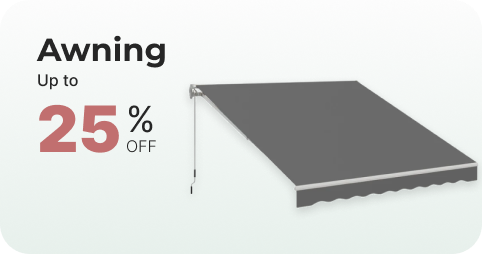Attending an art biennale or festival is one of the most exhilarating ways for art lovers to immerse themselves in contemporary culture, see groundbreaking works, and interact with artists from around the globe. Famous art events like the Venice Biennale, Documenta in Kassel, or Art Basel are magnets for creatives, critics, collectors, and enthusiasts, offering a unique opportunity to see what’s shaping the art world today. However, traveling to these events requires some thoughtful planning to make the most of your experience. Whether you are a seasoned traveler or this is your first time attending an international art festival, these tips will help you navigate, enjoy, and fully embrace the experience of a famous art biennale or festival.
Plan Early and Secure Accommodation
Major art biennales and festivals draw in thousands of visitors, so one of the first things to do when planning your trip is to secure accommodation well in advance. Hotels and rentals in cities like Venice or Basel book up quickly, often months ahead of time, and prices can skyrocket as the event approaches. Consider staying outside the main city if central accommodations are out of your budget; nearby towns often have more affordable options and can provide a quieter atmosphere to unwind after a day filled with art.
Another great option is to look for artist residencies or local homestays that may be available during the event. Sometimes locals rent out rooms or small apartments specifically to accommodate visitors coming for the festival. Staying in a local neighborhood can also give you a more authentic sense of the city’s culture and vibe, beyond the typical tourist experience.
Understand the Layout and Plan Your Route
Biennales like Venice can be sprawling, with venues spread out across different parts of the city. It’s important to understand the layout ahead of time and plan how you will navigate the event. Many biennales provide a detailed map and guidebook that outlines the venues, artists, and schedule. Use these resources to plan your route each day to avoid missing any key exhibitions.
The Giardini and Arsenale are the main exhibition areas for the Venice Biennale, but many countries and artists also exhibit in independent locations throughout the city. Walking through Venice’s maze-like streets can be a delightful adventure, but it can also lead to unexpected delays. Allow yourself extra time for getting lost—sometimes those detours lead to the most memorable discoveries, whether it’s a small gallery, a pop-up art installation, or a charming café.
If you’re attending Documenta in Kassel, it’s worth noting that the exhibitions are often spread across a variety of locations, including museums, abandoned buildings, and public parks. Renting a bicycle can be a great way to explore Kassel while maintaining the flexibility to visit out-of-the-way venues. Understanding the distances between venues and planning accordingly will save you time and energy.
Buy Tickets in Advance and Know the Schedule
Many art festivals and biennales require tickets, and purchasing them in advance is highly recommended. Not only will this save you from potentially long lines, but you can also often get a discount by booking early. Some biennales offer multi-day passes or VIP passes that grant access to exclusive events, such as artist talks, private viewings, or receptions. These can be worth the splurge if you’re interested in a more in-depth experience or want to avoid the crowds.
Pay attention to the event schedule. Many biennales have special programming such as panel discussions, workshops, and performances that can enrich your experience. These events often feature artists, curators, and critics discussing their work and the themes of the exhibition, offering insight that can deepen your understanding of the pieces you see. Make sure to note any events that interest you and arrive early, as seating is often limited.
Dress Comfortably but Fashionably
Art festivals like the Venice Biennale are known for drawing crowds from the art and fashion worlds, which means style is often part of the experience. While it’s not necessary to dress up, many attendees choose to put a little extra effort into their outfits. That said, comfort is key—these events require a lot of walking and standing. Opt for comfortable shoes that you can wear all day without discomfort, as you’ll likely be covering considerable distances between different pavilions and venues.
A stylish yet functional outfit with layers is ideal, especially if the event is outdoors or in different types of environments. If you’re attending an event like Art Basel, which tends to be a little more upscale, you may want to bring an outfit that can easily transition from day to evening, as there are often gallery openings, parties, or dinners that extend into the night.
Take Breaks and Avoid Art Fatigue
Attending a biennale or art festival can be overwhelming—there’s so much to see, and often, the sensory input can be intense. It’s easy to get what’s known as “art fatigue,” where your mind simply can’t process any more images, information, or ideas. To avoid burnout, make sure to take regular breaks. Sit down, grab a coffee, or take a leisurely stroll without a particular destination in mind. Allow your brain time to digest what you’ve seen.
Venice, in particular, offers plenty of spots away from the crowds where you can relax and recharge. Seek out a quiet canal, a small park, or a less-busy café for a break. Many biennales also have designated relaxation areas, often with seating and shade, to help visitors regroup. Remember, you don’t need to see everything—focus on enjoying what you do see, and don’t feel pressured to rush through exhibitions just to check them off your list.
Bring a Journal and Capture Your Thoughts
One of the most rewarding aspects of attending an art festival is reflecting on what you’ve experienced. Bring a small notebook or journal with you to jot down your thoughts, sketches, or favorite pieces from the day. Writing down your reflections not only helps to solidify your memories but also deepens your connection with the art you’ve seen. Many pieces in biennales are conceptual or multi-layered, and putting your reactions into words can help clarify your thoughts and enhance your appreciation of the work.
If you enjoy photography, take pictures of your favorite installations (where permitted), but also remember to put the camera down and simply take in the art. Some exhibitions might not allow photography, especially in more sensitive or interactive installations, so always be respectful of the artist’s guidelines.
Engage with Artists and Curators
One of the most exciting aspects of art biennales is the opportunity to engage directly with artists, curators, and other art enthusiasts. Don’t be shy about striking up conversations with the people around you—most attendees are there because they are passionate about art, and discussing different perspectives can be incredibly enriching. Biennales often feature artist talks and guided tours led by curators, which offer valuable insights into the works on display and the overarching themes of the festival.
If you see an artist near their work, take the opportunity to ask questions or express your appreciation. Artists are often more than willing to share the story behind their pieces, the process that led to their creation, or the concepts they’re exploring. These interactions can provide a deeper understanding of the work and a personal connection to the art that you wouldn’t get from simply reading a description on the wall.
Explore the City Beyond the Biennale
While art biennales and festivals are often the main draw, don’t forget to explore the host city itself. Cities like Venice, Basel, and Kassel are rich in history, culture, and local charm, and taking the time to explore beyond the art event can make your trip even more fulfilling. Visit lesser-known galleries, local artisan shops, or historic landmarks that give you a sense of the city’s character.
In Venice, for instance, there are countless smaller galleries and artisan workshops tucked away in the winding streets. Seek out places where local artisans create traditional crafts, like glassblowing on the island of Murano or lace-making on Burano. Experiencing the local culture in this way complements your biennale visit and gives you a broader perspective on the artistic life of the region.
Pack Smart and Stay Hydrated
Art biennales can mean long days of walking, standing, and navigating crowded venues. Make sure to pack smart by bringing a lightweight bag with essentials such as a refillable water bottle, sunscreen, a portable phone charger, and some snacks. Staying hydrated is especially important, particularly if you’re visiting during summer events like the Venice Biennale, where temperatures can be high, and shade can be limited.
Comfortable shoes are a must, as you’ll be on your feet for most of the day. Also consider bringing a small foldable stool if you find standing for long periods challenging—many venues don’t have seating, and a lightweight stool can make a big difference in your comfort level.
Stay Curious and Have Fun
Art biennales and festivals are meant to be fun, inspiring, and thought-provoking. While it’s easy to get caught up in the schedule or feel pressure to see everything, remember to enjoy yourself. Allow the art to surprise you, challenge you, and perhaps even confuse you—that’s part of the experience. Stay curious, ask questions, and be open to works that push you out of your comfort zone.
The beauty of art festivals lies in their ability to connect people from all walks of life through a shared love of creativity. By planning ahead, pacing yourself, and staying open to new experiences, you can make your visit to a famous art biennale or festival not just a trip, but a journey of artistic discovery that leaves a lasting impression.
















